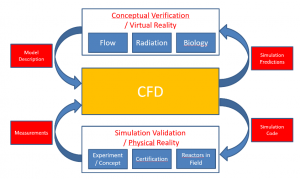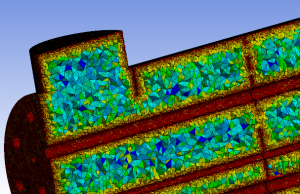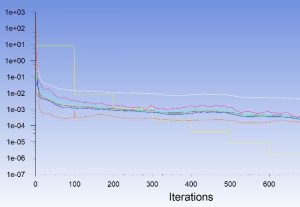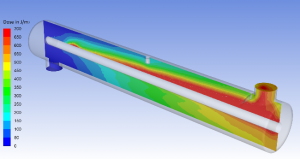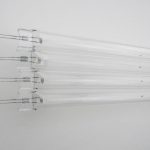The UV Experts “a look inside a UVC system”
Fred van Lierop and Rolf Sief discuss CFD and why it is must have?
Computational Fluid Dynamics (CFD) is a known technology, but small and medium size OEM’s may underestimate its value in both new designs and for ongoing improvements during the UV system development phase.
Rolf Sief has developed a path to offer CFD to 3rd party companies, and of our UV Expert group took a closer look at the technical advantages of an integrated CFD process.
CFD analyses have great potential in saving time during the design process and offers a cheaper and faster process compared to conventional testing for data acquisition. In “real” life tests, a limited number of test samples can be measured at a time, while in a CFD analysis, all desired quantities can be measured at once with high resolution.
Because CFD analyses approximate a real physical solution, CFD analyses can yield trusted results, if the CFD Expert has beside the knowledge of the fluid dynamics, deep and long-term skills in the area from the simulated UV system, such as UV radiation/irradiation and how UVC disinfection works.
Computational Fluid Dynamics (CFD) is the ideal tool to test ideas and transport them into a virtual prototype position. CFD will significantly reduce the development cost by exploring sensitivities and limitations of planned UVC-Systems in a very early stage. In addition, troubleshooting existing UVC-Systems can be handled by the “look inside” the UVC-System. It is possible to detect weak points and simulate the performance of an optimized design.
In the field of UVC disinfection for CFD the following disciplines are included:
- Radiation & Irradiation Calculation
(Point Source Summation, Keitz, Discrete Ordinates with different virtual model calculations based on certain given limits and application related dimensions) - Sensor (Measurement) & Control Technology
(optical input adjustments, sensor positioning, based on different UV lamp output parameters based on the simulated water transmission, as well as temperature related effects) - Biology
(Test organisms, organisms in the various applications, kill rates, photoreactivation)
How does CFD work?
A CFD analysis consists of the following three phases:
1. Pre-processing
In this phase, the potential UV-System is transformed into a computer model by:
• model generation in 3D-CAD
• implementation from CAD to CFD
• discretisation or mesh generation (subdivide the Model into finite calculation volumes)
• setting the physical description of boundary and volume layers
The calculations are performed, in this solving phase computational power is required and will take time.
3. Post-processing
In the post process, the results will be clearly visualized and analysed. At this stage the results and conclusions will be compiled on the basis of the customers’ needs and the experience of our specialist team.





